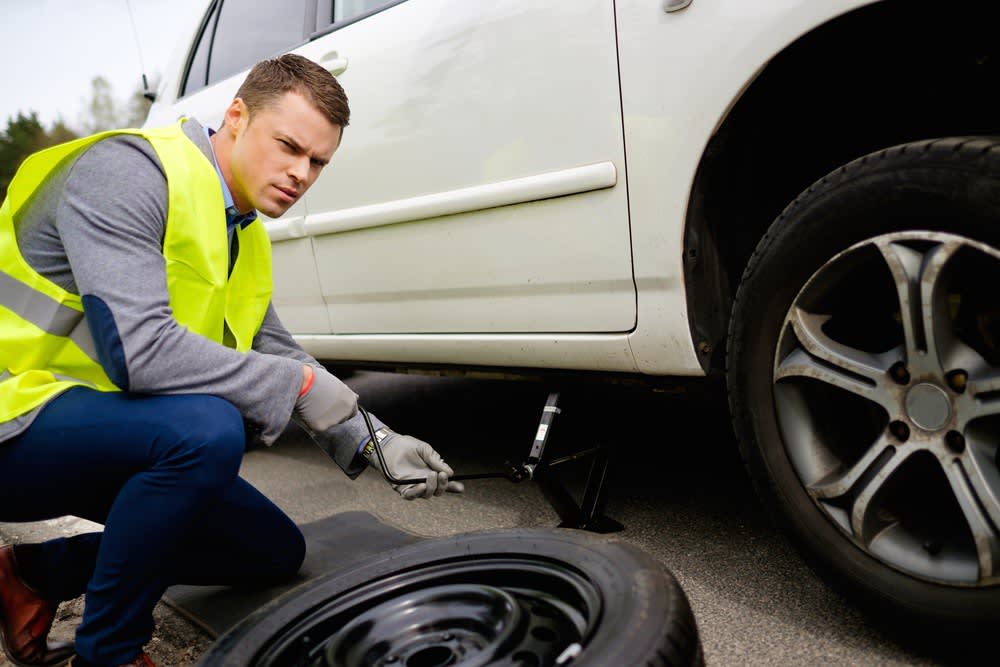

Run-Flat tires, as their name implies, are able to support the weight of a vehicle with no air in them at all. This protects the rims of a vehicle and makes the repair of the tire significantly easier. A deflated Run-Flat tire can still get the driver home or to a safe place where the wheel can be swapped. A Run-Flat tire can last 100 miles on average after it deflates, and it is advised that the vehicle stays under 50mph once air begins to leave the tire.
What Makes It Possible?
Since the 1930s, there has been experimentation with the idea of a tire that would function even after a puncture has occurred. There are several ways to achieve this, with pros and cons to each method:
-
Structured tires with thicker sidewalls to hold the weight of the vehicle.
- Pro: Easy to replace if damaged. Cost-effective alternative to spare wheel.
- Con: Useless if sidewall damage caused the deflation. Negatively affect vehicle handling.
- Pro: Easy to replace if damaged. Cost-effective alternative to spare wheel.
-
Material attached to the wheel under the tire that will support the vehicle’s weight.
- Pro: Stronger and vehicle can travel at a higher speed using this type. Can be placed inside a regular tire.
- Con: Doesn’t work well with small wheels or low-profile tires.
- Pro: Stronger and vehicle can travel at a higher speed using this type. Can be placed inside a regular tire.
-
Self-Sealing tires that let a limited amount of air out in the case of a puncture.
- Pro: Cheaper than structured run-flat tires and more effective at not getting punctured than regular tires. Perform more like a normal tire.
- Con: Reacts like a normal tire to large punctures or serious tire damage. Does no good if there is no air at all left in the tire.
What Applications Do They Have?
Armored cars and Military vehicles. Heavy-duty armored cars for both civilian and government use implement run-flat tires. Military vehicles also use run-flat wheels for operating in areas where changing a blown tire would be dangerous. For this application, the type of run-flat tire used is almost always the second type with added material attached to the wheel itself.
Vehicles with no spare tire. Many modern cars come from the factory with no spare tire at all and have stock run-flat tires. These almost always use the type of run-flats where the tire itself supports the weight of the vehicle in the event of a puncture.
Vehicles in areas where a puncture is likely or road sides are ill-equipped for wheel changing. People living on very rocky roads or in places where there is little or no room to pull over in case of a puncture (like in mountainous areas) can benefit greatly from this technology. Self-sealing tires and structured tires are the usual choices for this purpose as they can be installed in any vehicle and can also be installed without any special equipment.
How Useful Are Run-Flat Tires to the Average Driver?
While Run-Flat Tires are not a necessity for most people on the road, they can certainly be a very handy feature. Many vehicles come from the factory with Run-Flats for that very reason. Manufacturers reason that eliminating the need for changing wheels on the side of the road keeps their customers safer. For commuters, there is no significant downside to Run-Flat tires aside from the added cost.
Sports car drivers and anyone with an enthusiastic right foot may want to steer clear of Run-Flat tires as they do perform worse than normal tires on a track. Run-Flats weigh more and have an unusually stiff sidewall. Weekend warriors can very easily switch their Run-Flats with slick racing tires at the track, making them viable even to that type of consumer.



